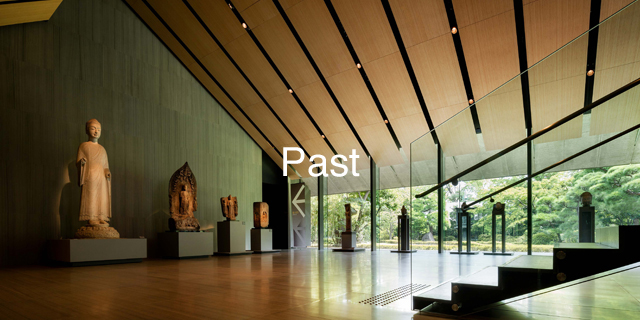
-
Museum Collection Exhibition
Radiant Raden
- Saturday, January 9 - Sunday, February 14、2021
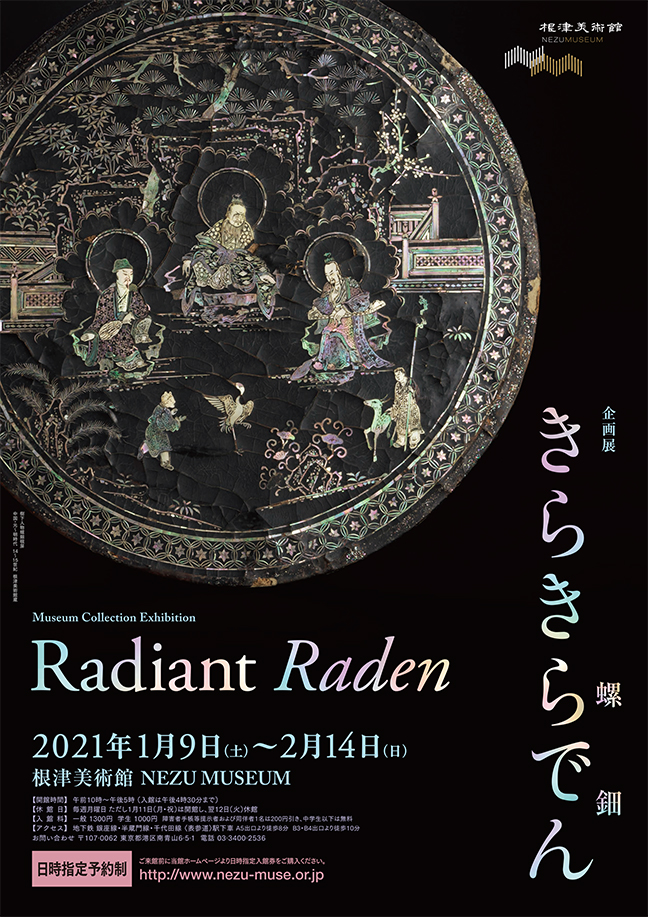

| Closed | Mondays, except January 11, and Januay 12 |
|---|---|
| Hours | 10 a.m. - 5 p.m.(last entry: 4:30 p.m.) |
| General admission | Adult 1300 yen, Student 1000 yen |
| Gallery | 1/2 |
Raden refers to a decorative technique using pieces of the linings of shells that have a lustrous, the nacre or mother-of-pearl layer. (Ra means a conch or other spiral shell, den implies decorating with shells.) Those glowing pieces are cut into the shapes of motifs and then inlayed or glued to the surface of the work. In Asia, raden was incorporated into the body of techniques used to decorate lacquerware. The principal shells used are great green turban shells and abalone shells, for their nacre is not plain white but glows with color gradations from blue to red, as though light is radiating from within. The world that these shells and the beautiful luster unique to lacquer weave has fascinated people for centuries.
This exhibition traces the history of the adoption of raden technqiues and their development in Japan, mainly through works in the Nezu Museum collection, while providing an opportunity to experience the fascination of radiant raden from China, the Korean Peninsula, Japan, and the Ryukyu Kingdom (now Okinawa prefecture).
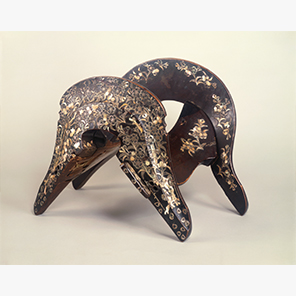


- Saddle with Cherry Blossoms Design
-
Japan Kamakura period, 13th century
Agency for Cultural Affairs - This raden saddle is a striking example from Japan's Middle Ages. Mountain cherry trees in full bloom have been rendered in thick great green turban shell inlaid in the black lacquer ground. The exquisitely meticulous carving of the pieces of shell, a technique that reached its peak in the Kamakura period (1185-1336), is magnificent. Raden saddles, which are mentioned in The Tale of the Heiji (13th century) and other military chronicles, give us a glimpse of warrior aesthetics.
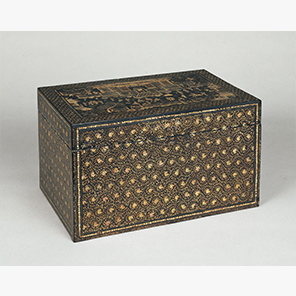

- Box with Pavilion and Human Figure Design
-
China Yuan dynasty, 13th-14th centuries
Nezu Museum - While the dominant view is that this box was produced in Yuan-dynasty China (1279-1368), it has been suggested that it was from Korea’s Goryeo dynasty (916-1392). If so, this work is particularly noteworthy because few examples of Goryeo raden survive.
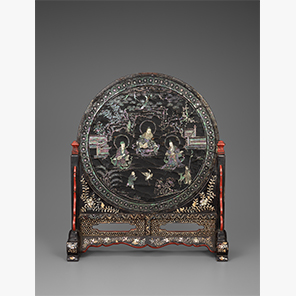

- Screen with Figures under Tree Design
-
China Yuan-Ming dynasties, 14th-15th centuries
Nezu Museum - The figures in the center of this screen are thought to be ancient China’s Three Sages. Great green turban shell nacre has been carefully cut to present the fine motifs of their robes. The raden gleams with a rainbow of colors, changing with the viewing angle. This small work brims with the bedazzling power of raden created using the thin-shell technique.
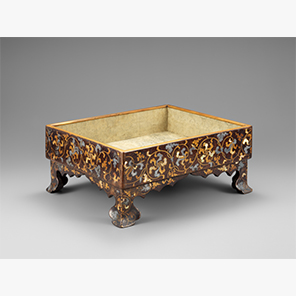

- Box with Floral Scroll Design for Priest's Vestment
-
Japan Edo period, dated 1609
Nezu Museum - Raden from Korea’s Joseon period (1392-1910) had a great influence on Japan. The rhythmical peony arabesques in raden that characterize Chosŏn works were adopted and assimilated in a Japanese style and combined with maki-e, as in this example.
